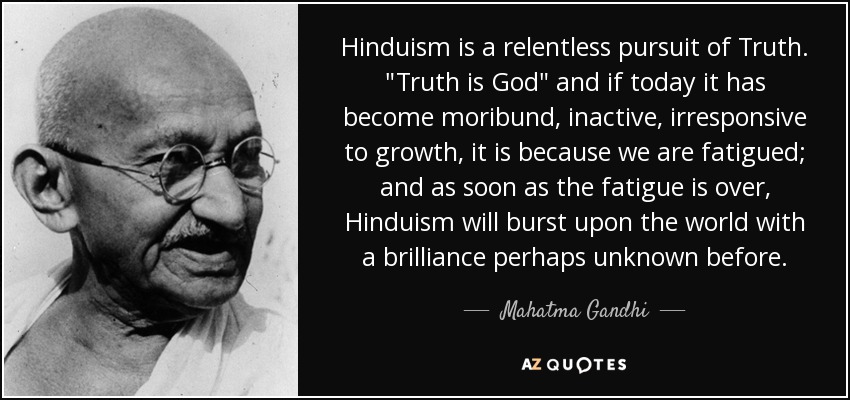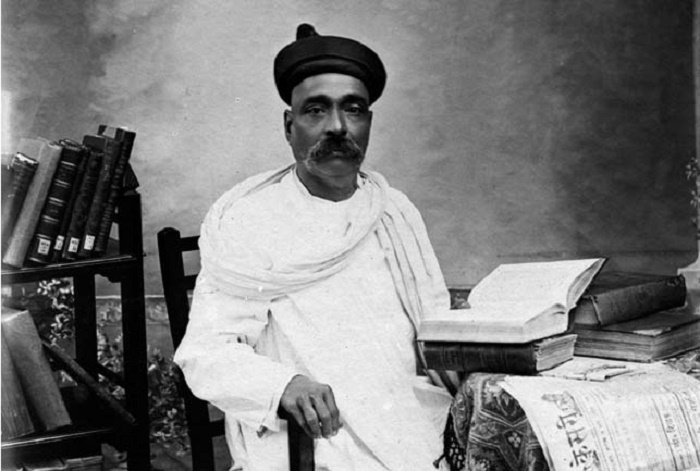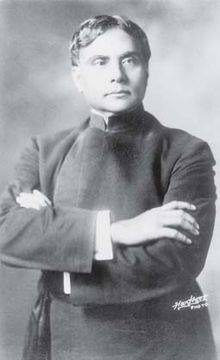Historical figures on the Bhagavad Geeta : Chinmaya Mission
==============================================================
=============================================================
Friday, May 13, 2022. 06:00.
Historical figures on the Bhagavad Geeta :
==============================================================
Mahatma Gandhi :
The Geeta is the universal mother. She turns away nobody. Her door is wide open to anyone who knocks. A true votary of the Geeta does not know what disappointment is. He ever dwells in perennial joy and peace that passeth understanding. But that peace and joy come not to the sceptic or to him who is proud of his intellect or learning. It is reserved only for the humble in spirit who brings to her worship a fullness of faith and an undivided singleness of mind. There never was a man who worshipped her in that spirit and went back disappointed.
I find a solace in the Bhagavad Geeta that I miss even in the Sermon on the Mount. When disappointment stares me in the face and all alone I see not one ray of light, I go back to the Bhagavad Geeta. I find a verse here and a verse there, and I immediately begin to smile in the midst of overwhelming tragedies–and my life has been full of external tragedies–and if they have left no visible, no indelible scar on me, I owe it all to the teaching of the Bhagavad geeta.
Aurobindo Ghose :
What is the message of the Geeta and what is its working value, its spiritual utility to the human mind of the present day, after the long ages of transformations of thought and experience? The human mind always moves forward, alters its view-point and enlarges its thought-substance, and the effect of these changes is to render past systems of thinking obsolete, or, when they are preserved, to extend, to modify and, subtly or visibly, to alter their value. The vitality of an/any ancient doctrine consists in the extent to which it naturally lends itself to such a treatment; for that means that whatever may have been the limitations or the obsolescences of the form of its thought, the truth of substance, the truth of living vision and experience on which its system was built, is still sound and retains a permanent valid significance.
The Geeta is a book that has worn extraordinarily well, and it is almost as fresh and still in its real substance quite as new, because always renewable in experience, as when it first appeared in or was written into the frame of the ‘Mahabharata.’ It is still received in India as one of the great bodies of doctrine that most authoritatively govern religious thinking; and its teaching is acknowledged as of the highest value if not wholly accepted by almost all shades of religious belief and opinion. Its influence is not merely philosophic or academic but immediate and living, an influence both for thought and action, and its ideas are actually at work as a powerful shaping factor in the revival and renewal of a nation and a culture. It has even been said recently by a great voice that all we need of spiritual truth for the spiritual life is to be found in the Geeta. It would be to encourage the superstition of the book to take too literally that utterance. The truth of the Spirit is infinite and cannot be circumscribed in that manner. Still it may be said that most of the main clues are there and that after all the later developments of spiritual experience and discovery, we can still return to it for a large inspiration and guidance. Outside India too it is universally acknowledged as one of the world’s great scriptures, although in Europe its thought is better understood than its secret of spiritual practice.
Lokmanya Tilak :
The Geeta was not preached either as a pastime for persons tired out after living a worldly life in the pursuit of selfish motives, nor as a philosophical advice as to how one should live one’s worldly life with an eye to Release, moksha, and as to the true duty of human beings in worldly life. My last prayer to everyone, therefore, is that one should not fail to thoroughly understand this ancient science of the life of a householder, or of worldly life, as early as possible in one’s life.
Swami Vivekananda :
The Geeta is a bouquet composed of the beautiful flowers of spiritual truths collected from the Upanishads.
Madan Mohan Malaviya :
I believe that in all the living languages of the world, there is no book so full of true knowledge, and yet so handy as the Bhagavad Geeta… It brings to men the highest knowledge, the purest love and the most luminous action. It teaches self-control, the three-fold austerity, non-violence, truth, compassion, obedience to the call of duty for the sake of duty, and putting up a fight against unrighteousness (Adharma)…. To my knowledge, there is no book in the whole range of the world’s literature so high above all as the Bhagavad Geeta, which is a treasure-house of Dharma not only for Hindus but for all mankind.
Dr Annie Besant :
Among the priceless teachings that may be found in the great Hindu poem of the Mahabharata, there is none so rare and precious as this “The Lord’s Song.” Since it fell from the divine lips of Sri Krishna on the field of battle, and stilled the surging emotions of the disciple and friend, how many troubled hearts has it quietened and strengthened, how many weary souls has it led to Him! It is meant to lift the aspirant from the lower levels of renunciation, where objects are renounced, to the loftier heights where desires are dead, and where the Yogi dwells in calm and ceaseless contemplation while his body and mind are actively employed in discharging the duties that fall to his lot in life. That the spiritual man need not be a recluse, that union with divine life may be achieved and maintained in the midst of worldly affairs, that the obstacles to that union lie, not outside us, but within us, such is the central lesson of the Bhagavad Geeta.
It is a scripture of Yoga; now Yoga is literally union; and it means harmony with the Divine law, the becoming one with the Divine life, by the subdual of all outward-going energies. To reach this, balance must be gained, as also equilibrium, so that self, joined to the Self, shall not be affected by pleasure or pain, desire or aversion, or any of the “pairs of opposites” between which untrained selves swing backwards and forwards. Moderation is therefore the key-note of the Geeta and the harmonising of all the constituents of man, till they vibrate in perfect attunement with the One, the Supreme Self. This is the aim the disciple is to set before him. He must learn not to be attracted by the attractive nor repelled by the repellant, but must see both as manifestations of the Lord, so that they may be lessons for his guidance, not fetters for his bondage. In the midst of turmoil, he must rest in the Lord of Peace, discharging every duty to the fullest, not because he seeks the results of his actions, but because it is his duty to perform them. His heart is an altar, love to his Lord, the flame burning upon it, all his acts, physical and mental, are sacrifices offered on the altar, and once offered, he has with them no further concern.
As though to make the lesson more impressive, it was given on a field of battle. Arjuna, the warrior-prince, was to vindicate his brother’s title, to destroy an usurper who was oppressing the land; it was his duty as prince, as warrior, to fight for the deliverance of his nation and to restore order and peace. To make the contest more bitter, loved comrades and friends stood on both sides, wringing his heart with personal anguish, and making the conflict of duties as well as physical strife. Could he slay those to whom he owed love and duty, and trample on ties of kindred? To break family ties was a sin; to leave the people in cruel bondage was a sin; where was the right way? Justice must be done, else law would be disregarded; but how slay without sin? The answer is the burden of the book. Have no personal interest in the event; carry out the duty imposed by the position in life, realise that Isvara, at once Lord and Law, is the doer, working out the mighty evolution that ends in Bliss and Peace; be identified with Him by devotion, and then perform duty as duty, fighting without passion or desire, without anger or hatred; thus activity forges no bonds, Yoga is accomplished, and the soul is free.
Such is the obvious teaching of this sacred book. But as all the acts of an Avatara are symbolical, we may pass from the outer to the inner planes, and see in the fight of Kurukshetra, the battle-field of the soul, and in the sons of Dhritarashtra, enemies it meets in its progress; Arjuna becomes the type of struggling soul of the disciple, and Shri Krishna is the Logos of the soul. Thus, the teaching of the ancient battle-field gives guidance in all later days, and trains the aspiring soul in treading the steep and thorny path that leads to peace. To all such souls in the East and the West come these divine lessons; for the path is one, though it has many names, and all souls seek the same goal, though they may not realise their unity.
Aldous Huxley:
The Geeta is one of the clearest and most comprehensive summaries of the Perennial Philosophy ever to have been done. Hence its enduring value, not only for Indians, but for all mankind… The Bhagavad Geeta is perhaps the most systematic spiritual statement of the Perennial Philosophy.
*****
===============================================================
.jpg)
.jpg)











Comments
Post a Comment